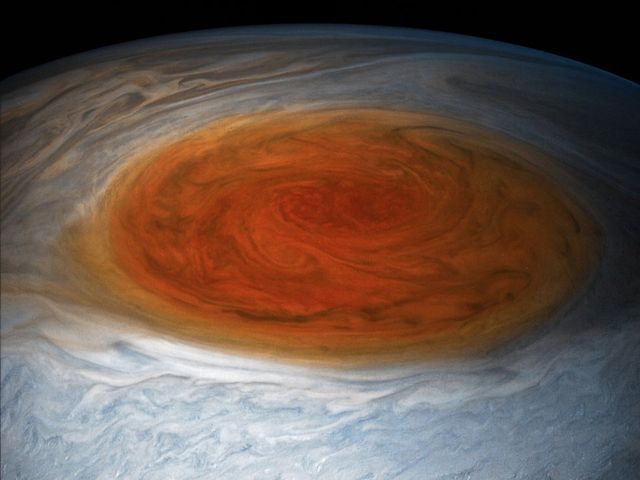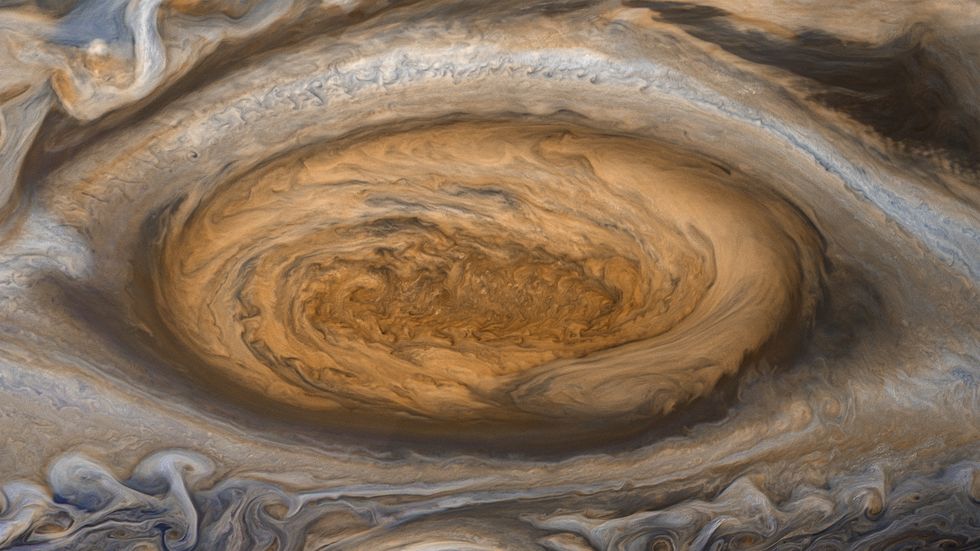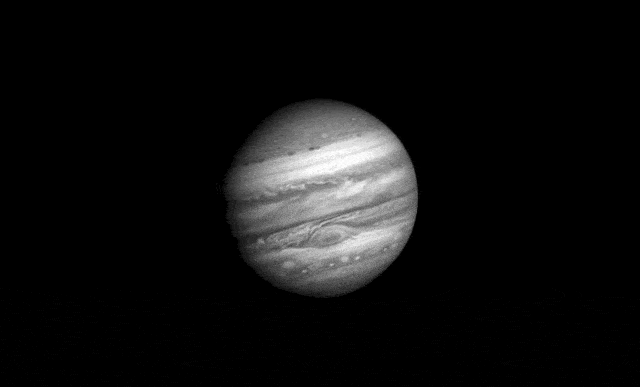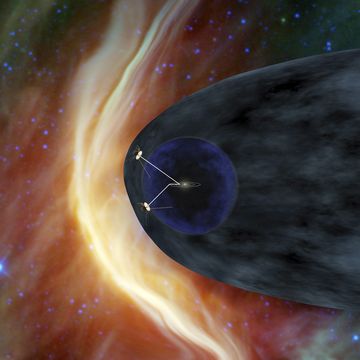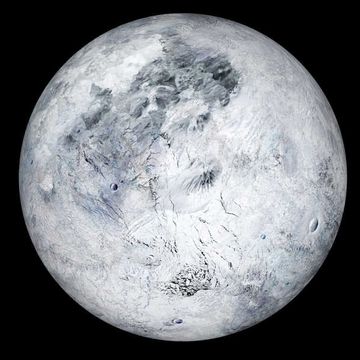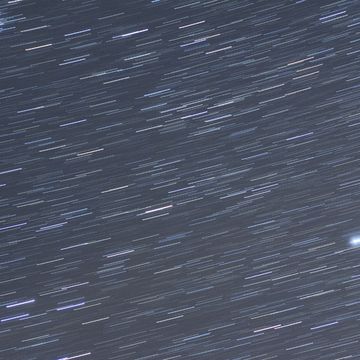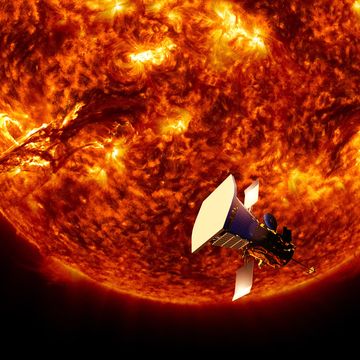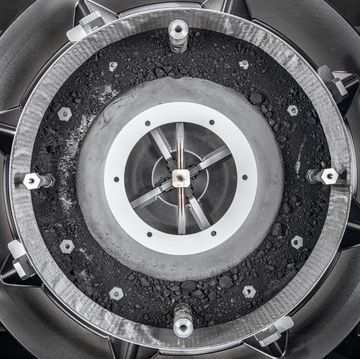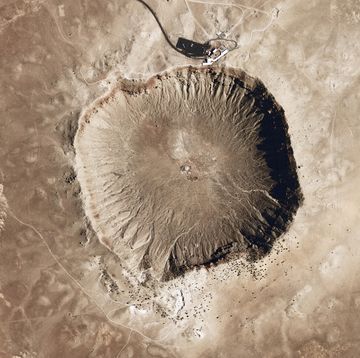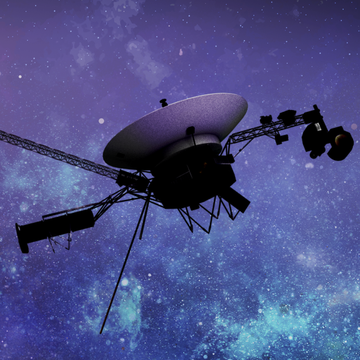- Jupiter's Great Red Spot has been churning for at least 200 years, and probably longer.
- The Juno spacecraft is studying Jupiter, and its new pictures show that the spot is shrinking.
- Astronomers don't fully understand what happens within the crushing depths of gas giant planets. This storm's demise could teach them something big.
On July 12, 2017, the Juno spacecraft made a close pass to Jupiter's Great Red Spot, the famous anticyclonic storm that dwarfs any other vortex in the solar system. The resulting images are some of the most detailed and spectacular observations of the storm ever taken. But that flyby told scientists something else: the famous centuries-old storm is on its last legs.
Jupiter's spot has been raging for at least 200 years, and probably longer. The first reliable drawings of the anticyclone were created in the mid 19th-century, and astronomers began photographing the planet-sized storm in the 1880s. Some less-reliable descriptions, which could refer to the Great Red Spot, date as far back as the 1600s.
The turbulent vortex is large enough to swallow the Earth whole, but when it was first discovered, the Great Red Spot was even greater—large enough to swallow about four Earths. But nothing lasts forever. In just 20 years or so, the Great Red Spot could be gone for good.
Glenn Orton, a planetary and atmospheric scientist at NASA JPL who works on the Juno mission, told Popular Mechanics in an email that the storm could shrink from its elliptical shape into a circular storm that might remain stable for years to come. If it shrinks beyond that, however, it could die out much sooner.
"It could become vaguely circular and stay that way, like the 'white ovals' that merged and converged to a single vortex that have been stable for over a decade," says Orton. "Or it could shrink below that and become unstable."
The Great Red Spot is oblate, meaning it takes the shape of a horizontal ellipse. As the storm dies down, it shrinks horizontally, covering fewer degrees of longitude on the face of Jupiter. In the 1880s, Orton says, you might have called it "the Great Red Sausage, because it’s nearly 40 degrees long in longitude!" That's roughly 30,000 miles across. Since then, though, the storm has shrunk to only 13 degrees of longitude, or about 10,000 miles across, 1.3 times the diameter of the Earth.
The storm is driven by rotating atmospheric bands traveling at up to 300 mph that keep the anticyclone swirling. The bands rotate in the opposite direction of the Great Red Spot and keep it spinning. "They're like conveyor belts feeding momentum into the 'wheel' that’s spinning between them," Orton says.
The Great Red Spot has more or less maintained its vertical length, or degrees of latitude, over the centuries. As it shrinks in longitude, it gets closer to a circular shape. But if it crosses the line and becomes prolate, a vertical ellipse, the same atmospheric conveyor belt that currently keeps it running could tear it apart. Even a circular storm would be a sign of the Great Red Spot's way out into the Great Red Beyond.
The death of the storm could prove to be a significant opportunity for scientists who study planetary atmospheres. Long-lasting storms on Jupiter, Saturn, and Neptune are the result of poorly-understood churning within the depths of the planets' immense atmospheres. What causes the dynamics from below to bubble up to the surface and trigger megastorms is still a mystery.
Watching the Great Red Spot fizzle out will help scientists understand how the storm's energy is dispersed into Jupiter's atmosphere and potentially provide a glimpse of what lurks below the cloud tops. Understanding the depths of planets like Jupiter is the key to learning more about the other gas giants in the solar system, as well as those strewn across the galaxy.
"I think that if there’s any single picture about the longevity [of storms] involved, it has to do with the influence of the state of the deep atmosphere," says Orton. "We are seeing long-lived circumstances... that are the result of dynamical flow that is governed by very deep processes. ... [It] begs the question about what is governing those deep flow patterns. By comparison, the Earth doesn’t have processes at such an 'abyss' that are influential."
Still, it will be bittersweet to see the Great Red Spot lost back into the depths of Jupiter. The storm has captured the imagination and terror of all humanity for centuries. But like a phoenix from the heart of Jupiter, another red storm of rage could burst to the surface of the giant planet.
"My gut feeling it that, if the GRS dies out, something like it will re-emerge," Orton says.

Jay Bennett is the associate editor of PopularMechanics.com. He has also written for Smithsonian, Popular Science and Outside Magazine.
